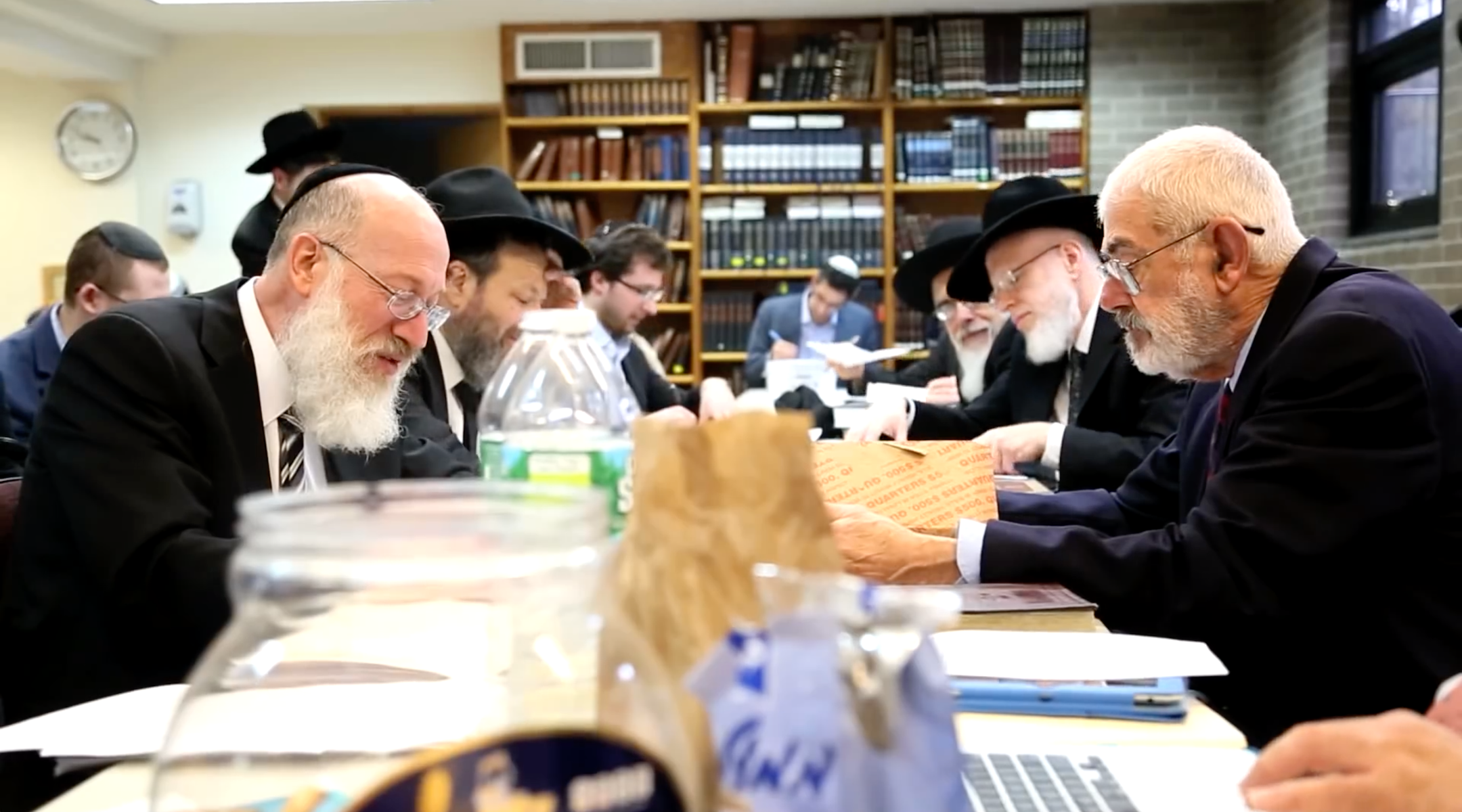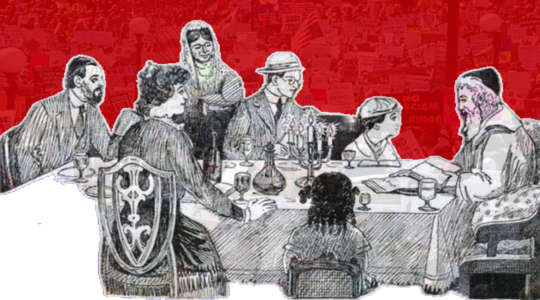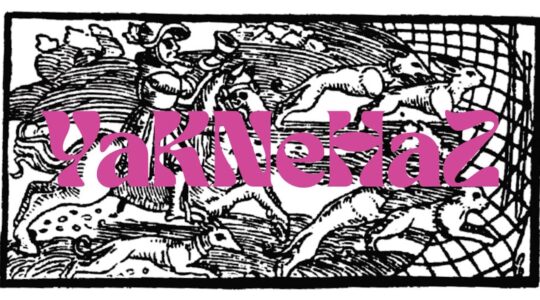Three years ago, my wife, Rabbanit Leah Sarna — one of the first women Orthodox rabbis — was preparing to play an important role for our lay-led synagogue in suburban Philadelphia, Congregation Sha’arei Orah. Her task was to sell the community’s hametz, or leaven.
It’s something that observant Jews undertake to fulfill the Torah’s commandment to eliminate hametz, or leavened food, before Passover … without exactly doing so: They sell their leavened food to a non-Jew for the duration of the holiday. Despite not being our synagogue’s official leader, Leah volunteered to facilitate the sale. All we needed was a non-Jewish buyer.
That should have been easy. The reason we’d moved to Philadelphia and joined this synagogue two years earlier was for my job as a professor of biblical studies at Villanova University, a Catholic university nearby. I’m the only full-time Jewish professor in a theology department of several dozen Christian colleagues, with whom I maintain relationships of both professional collaboration and genuine friendship. Selling hametz is a rare example of a traditional Jewish practice that not only accommodates but actually requires this kind of community with non-Jews. “Just ask one of your colleagues,” Leah suggested.
I agreed. Yet when I went to reach out to them, I hesitated. Precisely because it includes non-Jews, selling hametz also entails significant Jewish vulnerability: It reveals some of the strangest aspects of Judaism. How would I even explain it to my colleagues? “It’s an actual sale of random food in all these people’s homes — like, you’re really buying it — but don’t worry, you don’t have to keep it, because we’ll buy it back afterward — but you can keep it if you want, because, really, it’s an actual sale!” Just the thought felt ridiculous.
Eventually, with Passover approaching, I took a deep breath and sheepishly asked several colleagues whether they’d do us this favor. I was surprised by the response: genuine enthusiasm across the board. Scholars from numerous Christian denominations and traditions eagerly volunteered. I thought I’d be begging for help. In the end, I was turning people down!
The lucky winner was Philip A. Cunningham, a Catholic theologian and expert on Jewish-Catholic relations at another local university. Before Passover, Phil came to our house to buy the hametz. Leah also invited the whole synagogue, beyond those serving as Jewish legal witnesses, and several people took up her offer. In their presence, Leah and Phil reviewed the terms of the sale and undertook several transactions to ensure its effectuation. For instance, she gave him a key to our garage, a portion of which he would be leasing, because immovable property transfer is more straightforward in Jewish law. Leah affirmed Phil’s right to request access to any hametz indicated in the contract. This was, after all, a real sale.
Watching this, I understood why I had initially hesitated. Given my scholarly background, I felt intensely aware of how the hametz sale, an intricate process of circumventing the Torah’s apparent meaning, aligns with Christianity’s negative stereotypes of Judaism as narrowly legalistic and unconcerned with deeper religious meaning. In fact, in the New Testament, Jesus warns, “Beware the yeast (i.e., hametz) of the Pharisees, which is hypocrisy” (Luke 12:1). Playing on Passover, Jesus turns hametz into a metaphor for those aspects of Judaism that should be rejected. And I was supposed to ask Christians to participate in a strange practice that was all about this hametz? Could I really blame them if they saw these legal acrobatics as “hypocritical”?
Fortunately, the hametz sale completely upended my concerns. In this vulnerable moment, here was a Christian who, despite the long Christian tradition of anti-Judaism, treated the granular details of Jewish law with seriousness, curiosity and admiration. In fact, he was literally buying into it. Jewish-Christian dialogue often operates in the lofty realm of theology. This was the opposite of that — but for precisely that reason, it felt more real. The fact that it happened in a year when (as in 2025) Passover and Easter coincided, necessitating some scheduling maneuvers, only underscored the concreteness.

Rabbi Mordechai Willig, left, the longtime leader of Young Israel of Riverdale in the Bronx, executes the 2015 sale of hametz to John J. Brown, a local real estate agent, right. (Josh Weinberg/screenshot from YouTube)
Since then, Leah (now officially our synagogue’s spiritual leader) and I have treated this practice as an annual affirmation of Jewish-Christian partnership. Each Passover, we invite a different Christian scholar, representing various denominations and academic fields, to buy our synagogue’s hametz. We encourage the whole community to attend — not simply to watch but to get to know the buyer.
Last year, for example, we sold to my Villanova colleague Massimo Faggioli, an expert on 20th-century Catholicism, including that era’s revolution in Jewish-Catholic relations. In addition to meeting many community members, Massimo recorded a short video for the synagogue’s WhatsApp group in which he shared that his participation was especially meaningful as a native of Ferrara, an Italian city with a rich Jewish history. More lightheartedly, one synagogue member covered the cabinets where they had stored the food with signs that read “Massimo’s hametz.” The sale is not an anonymous operation. It’s a real relationship between communities.
I mentioned that in the New Testament, hametz symbolizes what should be avoided. In recent Catholic writings, however, it has become positive: as the catalyst of basic sustenance, it symbolizes productive social change. Pope Francis has written, “The local has to be eagerly embraced, for it possesses something that the global does not: it is capable of being a leaven, of bringing enrichment. … Each individual can act as an effective leaven by the way he or she lives each day. Great changes are not produced behind desks or in offices.”
Perhaps this explains why selling hametz is such a meaningful manifestation of partnership between Jews and non-Jews. Ultimately, it is in local, personal relationships — down to nitty-gritty business transactions — that the real work of building shared community is found. If your synagogue sells hametz, then, by definition, you live among people who are doing that real work. This practice, often overlooked or taken for granted, can be an annual opportunity for us to reflect on how fortunate we are that this is the case. Especially in the difficult times we live in, it is these seemingly small moments that have the potential to feel the most hopeful, and the most redemptive.
JTA has documented Jewish history in real-time for over a century. Keep our journalism strong by joining us in supporting independent, award-winning reporting.






